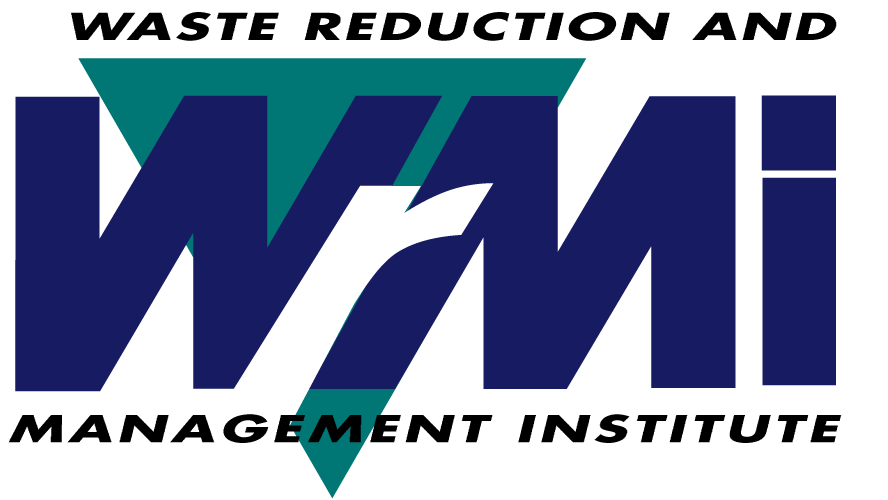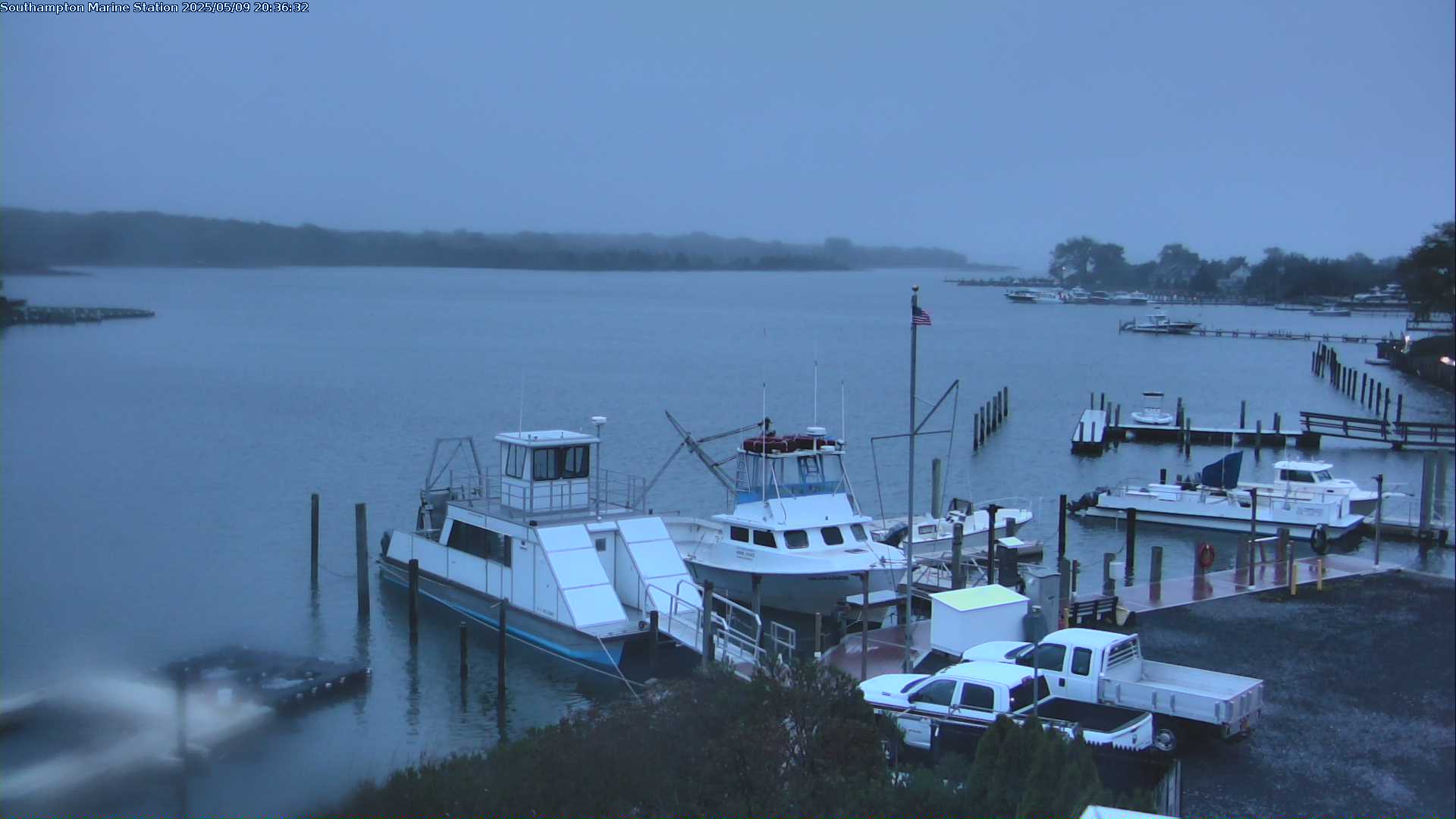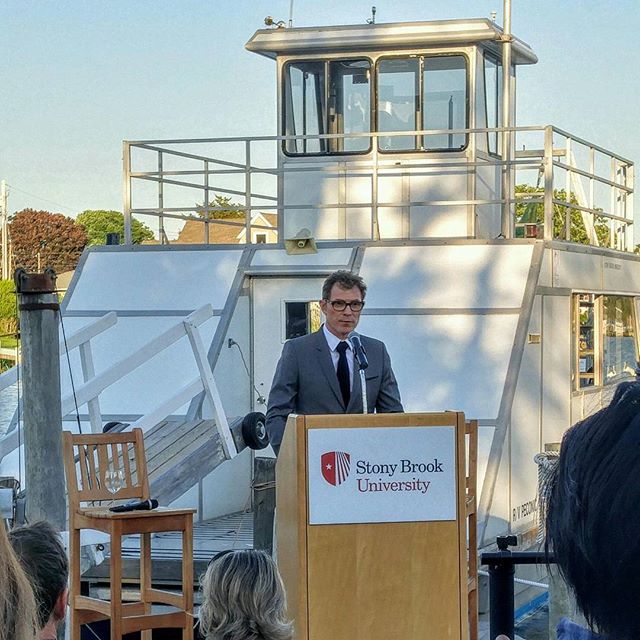Long Island Groundwater Research Institute
The State University of New York at Stony Brook created the Long Island Groundwater Research Institute (LIGRI) in 1994 to marshal the expertise of the University for the study of groundwater hydrology and chemistry. LIGRI was established in NY State Law (Chapter 654) in 1997 in order to bring the results of scientific research to bear on the region’s most pressing groundwater problems. Researchers from the School of Marine and Atmospheric Sciences, the Department of Geosciences, and the Department of Applied Mathematics and Statistics provide the University’s long history of groundwater research in groundwater modeling, geochemical studies, and connections between groundwater and our coastal ocean. Dr. Henry Bokuniewicz serves as the Director of LIGRI.

Coastal Ocean Action Strategies Institute
The Coastal Ocean Action Strategies (COAST) Institute was created in 1989 to assist in coastal zone management and coastal marine policy analysis by ensuring that the best technical information is available. COAST has been called upon to assist in resolving coastal problems at home on Long Island, throughout the U.S. and in many parts of the world. For example, on Long Island, we are involved with beach and storm surge monitoring on the ocean coast of the south fork, the resolution of coastal erosion hazard areas, the aftermath of Superstorm Sandy, and the identification of offshore sand resources needed to insure the resilience and sustainability of coastal communities. Dr. Henry Bokuniewicz is the current Director of COAST.

Waste Reduction and Management Institute
WRMI’s goal is to reduce the impact of waste generation on society through a program of research, assessment, education and policy analysis. WRMI has promoted waste prevention strategies, improved understanding of the cycling of contaminants in the environment, and developed creative uses for waste materials. WRMI has also analyzed a number of waste management/marine pollution policy initiatives. The Institute is a joint SBU activity with Technology and Society in CEAS.
WRMI researchers continued their investigations into the engineering, chemical and environmental characteristics of municipal solid waste (MSW) combustion ash. Most notable was the evaluation of the Boathouse, a structure fabricated in 1990 using 14,000 construction quality cement blocks that substituted MSW combustion ash in lieu of natural aggregates. Some 25 years later, cores were extracted from the building that showed the structural integrity of the building was as sound as when built and that the chemical composition of the blocks were statistically the same as well. Chemicals in the ash had not been lost or altered. Ash blocks are suitable for construction.
Work continued on waste generation and management processes, including a three-week waste sorting effort in the Town of Brookhaven (~10,000 lbs. of waste and recyclables) as a follow-up to a 2012 waste sort. It was also to detect the effects of a switch by the Town to single-stream recycling. A model of recycling was created that demonstrated the economic effectiveness of curbside recycling, along with estimation of US food waste generation. Work was done on materials changes in consumer packaging since the late 1980s.
Laboratory and technology development work on a catalytic process to remove hydrogen sulfide from landfill gas with Devinder Mahajan (Chemical Engineering) continued. We reviewed models to estimate landfill gas generation and emission and means of generating energy from landfills, especially when local energy networks are still being developed or as alternatives to standard energy sources.
We are collecting groundwater head data on a monthly basis near the Brookhaven ash fill and former landfill, developing a flow model for the landfill vicinity and investigation of ways to validate complicated groundwater models. We are reviewing commonly used groundwater models to estimate nitrate releases to Long Island estuarine systems, and have analyzed the value of the hyporheic zone to remove nitrate from aquatic systems. We are conducting a review and further analysis of data collected by Suffolk County Department of Health Services regarding the groundwater pollution potential of larger compost sites.
As part of NYS RISE, WRMI completed its analysis of the environmental consequences resulting from the failure of the Bay Park Sewage (50 MGD) Treatment Plant during Superstorm Sandy. The work contributed to the decisions concerning the relocation of the outfall to an ocean discharge.
We undertook an assessment of the need to dredge the inlet to Flax Pond for the purpose of reducing marsh flooding and improving the pond’s water quality. The data and information are being used to complete an environmental dredge/spoil application with Suffolk County.
We also evaluated and designed a denitrifying bioreactor along the Forge River on the south shore of Long Island as a means of remediating ground water prior to discharging to coastal waters.
The Evan R. Liblit Memorial Scholarship Fund marked its 20th anniversary in 2017. The annual graduate award, currently in the amount of $4,000, is for an excellent SoMAS student who has demonstrated accomplishments in public service that have benefitted the environment or society. The 2017 graduate Liblit Scholar is Lori Clark.
The two undergraduate awards, of $1,500 each, are given to two promising environmental studies majors, marine sciences majors, coastal environmental studies majors, sustainability studies majors with science emphasis, or science/engineering majors with an environmental studies minor (or at least 12 credit hours of environmental studies courses) or an emphasis in waste management. The 2017 undergraduate Liblit scholars are Maria Grima and Julia Petersen.
Institute for Ocean Conservation Science
The Institute for Ocean Conservation Science is celebrating ten years at Stony Brook University in 2018. The Institute’s mission is to conduct science in support of marine conservation. IOCS is dedicated to transforming real-world policy and public attitudes while pursuing serious science to further understand and help resolve the plight of the oceans. Unique in being established as an academically-based institute with a mission to advance ocean conservation, the Institute was founded in 2003 and came to Stony Brook University in 2008. Led by Dr. Ellen Pikitch, the Institute is comprised of staff, postdoctoral scientists, graduate students, and volunteers, working on projects both at the local and global levels.
In 2016-17, the Institute has grown in both size and impact. IOCS received several grants during this time: three years of additional funding for the Shinnecock Bay Restoration Program, a two-year grant to study the effectiveness of marine protected areas in China in conjunction with Shanghai Jaio Tong University in China, and one year of funding from the Italian Ministry of the Environment to conduct a mapping study of priority areas for marine protection worldwide. With this new funding, IOCS expanded its team by hiring two postdocotoral scientists, Dr. Paul Tompkins and Dr. Cuiyu Wang.
Over the last two years, IOCS has become a leader in the field of marine protected areas (MPAs). Dr. Ellen Pikitch and Christine Santora, IOCS Assistant Director, are involved with efforts at the United Nations to increase MPAs globally, through their work with the Ocean Sanctuary Alliance and the Sustainable Development Goals. IOCS co-convened a high-profile conference in Rome, Italy, in March 2016 that brought together dozens of scientists and policymakers to agree upon ways forward for more MPAs around the world. IOCS staff and students organized events at the United Nations General Assembly, and the inaugural Oceans Conference held at the UN in June 2017. IOCS also hosted a group of UN Ambassadors at SoMAS’s Southampton Marine Station, where they toured the laboratory and Shinnecock Bay.
IOCS also focuses on fisheries science and conservation on global, regional, and local levels. A longstanding area of focus and expertise for IOCS is “forage fish”—a key level of the food web that transfers energy from plankton to top predators. Dr. Ellen Pikitch led scientific efforts both in the policy arena and in the peer-reviewed literature to promote an ecosystem approach to the management of these fish. IOCS continues its survey work in Shinnecock Bay to understand the fisheries community within seasons and over time, with an additional special focus on summer flounder.
In special news, Dr. Pikitch has recently earned several awards and honors. In 2016, she received the prestigious Oscar Elton Sette Award from the American Fisheries Society, established to recognize an “Outstanding Marine Fishery Biologist” who has demonstrated sustained excellence in the areas of research, teaching, and administration. In 2017, she was named Advisor of Ocean Resource Management to the country of Palau. She was also chosen as the feature cover and article for Stony Brook Magazine’s inaugural issue.
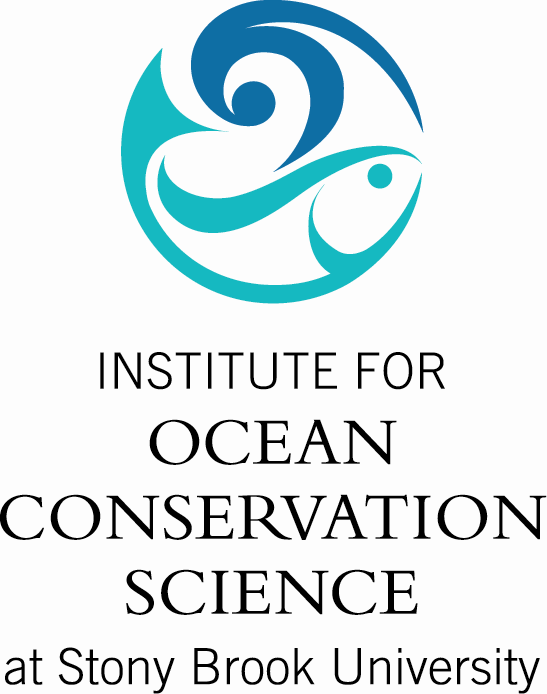
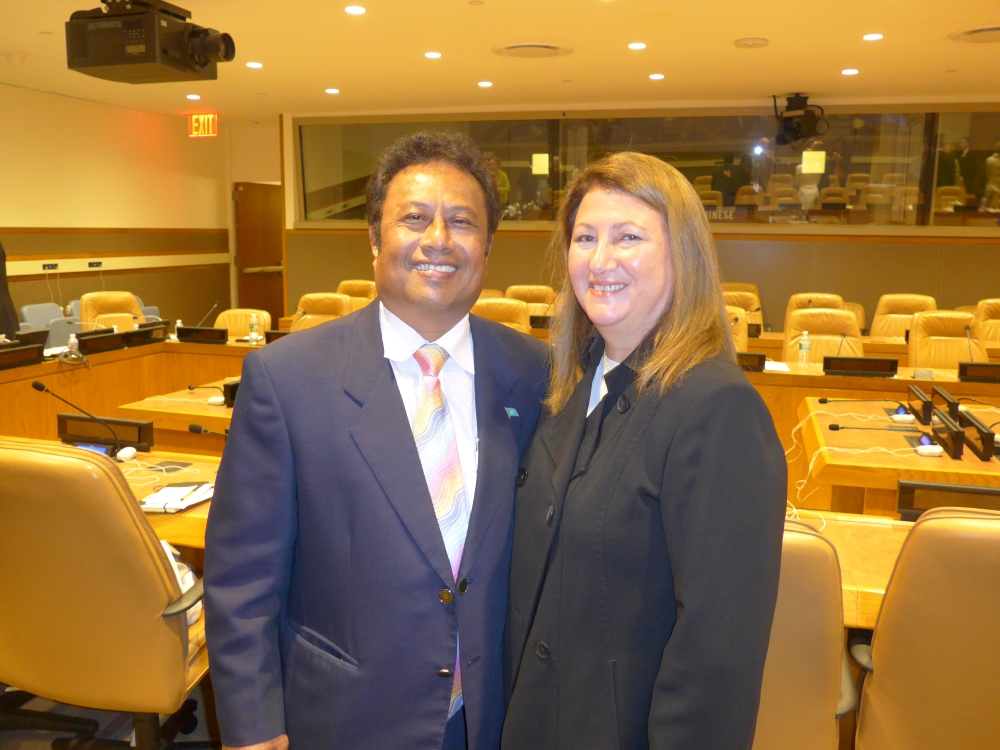
Institute for Terrestrial and Planetary Atmospheres
The Institute for Terrestrial and Planetary Atmospheres (ITPA) was established in 1991 as Stony Brook University’s center for research and teaching in atmospheric sciences. The Institute offers an undergraduate program granting the B.S. degree and a graduate program in which students can earn M.S. and PhD degrees. ITPA faculty conducts research on a wide range of topics in atmospheric sciences including atmospheric chemistry, aerosol physics, weather forecasting, climate dynamics, climate modeling and climate prediction. The Institute is housed in the School of Marine and Atmospheric Sciences.

Sustainability Studies
The Sustainability Studies Program became part of SoMAS in 2016. This interdisciplinary program prepares students to understand and meet today’s interwoven environmental, social, political, economic and ethical challenges in such a manner as to maintain a safe, healthy and enduring ecosystem and society. Sustainability Studies offers B.A. degrees in Environmental Design, Planning, and Policy; Environmental Humanities; Ecosystems and Human Impact; and Sustainability Studies; a B.S. degree in Coastal Environmental Studies; and a minor and graduate certificate in Geospatial Science. Our majors have secured employment and/or pursued graduate studies in areas including: urban and regional planning, landscape architecture, public health, marine policy, environmental education, ecology, parks management, field biology, sustainability management, and transportation planning. Some recent highlights (see photos) from Sustainability Studies include:
- The selection of Dr. Sharon Pochron’s innovative earthworm ecotoxicology research courses as SENCER (Science Education for New Civic Engagements and Responsibilities) model courses by the National Center for Science and Civic Engagement,
- Study abroad trips to Cuba led by Dr. David Taylor focused on the use of natural history, arts, media and cultural traditions as a means of encouraging citizens to adopt environmentally sustainable practices,
- The use of sites on the Stony Brook University campus as design challenges for students in Dr. Donovan Finn’s senior capstone course.
Center for Clean Water Technology
The NYS Center for Clean Water Technology (CCWT) was established by Governor Cuomo and NYSDEC in 2015 to develop next generation approaches for handling household wastewater that are more efficient at removing nitrogen and other contaminants, less expensive, easier to operate, and smaller in size. In 2016, CCWT was further charged with exploring technologies that can remove organic contaminants such as 1,4-dioxane from public drinking water supplies. Both issues are central to public and ecosystem health on Long Island and are also topics with global relevance. CCWT is co-directed by SoMAS Professor, Chris Gobler, and Civil Engineering Professor, Hal Walker. CCWT has received more than $6M in public and private funding since its inception and has provided support to thirteen graduate from SoMAS and other departments.
Marine Animal Disease Laboratory
The Marine Animal Disease Laboratory (MADL) is New York State’s reference laboratory for shellfish diseases. As such, the laboratory runs a marine animal health program that addresses health issues involving economically- and ecologically-important shellfish species. This multi-disciplinary program targets enzootic and emerging infectious and non-infectious diseases as well as zoonotic diseases that threaten human health, aquacultured stock health and the health of wild shellfish species. Activities encompass disease surveillance and monitoring, disease prevention and management, and research on the cause and consequences of shellfish diseases. The laboratory provides disease diagnostic services to public and private users as well as health certification for the interstate shipment of shellfish by New York State municipalities and private aquaculture companies. In this framework, MADL processed over 1,500 specimens for various users in 2016-2017. Research activities performed in the lab resulted in the publication of over 15 peer-reviewed scientific papers.

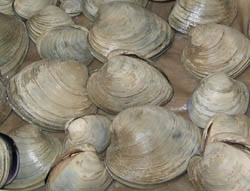
Flax Pond Marine Laboratory
The Flax Pond Marine Laboratory will be undergoing a 3000 sq foot addition to house a brand new shellfish hatchery. This expansion is part of Governor Cuomo’s clean water initiative. The goal of the shellfish hatchery is to produce 25 million newly settled clams per year. In addition, the lab will receive a new seawater intake system. New in-building seawater heating and cooling systems will also be installed.
The lab grew it’s school outreach programs ten-fold over the previous year.

Southampton Marine Sciences Center
2017 was an exciting year at the Marine Sciences Center at the Southampton campus. We have continued to increase our public outreach program, reaching over 1500 members of the local community, with a majority of them being high school students. These programs include tours of the facility, winter bird/seal cruises and our most popular bay explorations.
The Center has also been vital to the growth of the Shinnecock Bay Restoration Program (ShiRP) by supplying support for spawning and grow-out activities of shellfish as well as vessel operations to deploy these organisms into Western Shinnecock Bay. The growth of ShiRP caught the attention of Governor Andrew Cuomo who has taken a keen interest in supporting efforts to improve water quality in New York State. He came to the Center in June to discuss with Professor Chris Gobler the problem of the brown tide and assisted the team by deploy clams to the bay. At the conclusion of the visit, Governor Cuomo announced a $2 million grant for the shellfish restoration project, which utilizes shellfish to fight brown tide.
Research projects in the areas of harmful algal blooms, ocean acidification and sea grass ecology continue to expand at the Center, with the addition of several new graduate students in both the Gobler and Peterson Labs. These new projects have also created many learning opportunities for undergraduate students participating in the Semester by the Sea program.
We have also received some much needed facilities upgrades in the way on new docks. The site of the Center has been a research facility for over 50 years, and some of these docks have been here since the beginning. The new docks have allowed us to accommodate our growing fleet and better serve our users.
The Center also played host to a couple conferences. First, the Nereis Park V conference brought together the world’s leading scientists to present their latest research and discuss biological modifications of the seabed in a changing world. The second was Stony Brook University’s 3rd Annual Food Lab Conference that brought together food enthusiasts, cooks, celebrities, chefs, farmers, food producers, beer/wine/spirt makers for an entertaining and informative talks and tastings. The keynote of this event was the Food Network’s Chef Bobby Flay.
The Marine Sciences Center has had an extremely successful year and 2018 is looking even more promising.
Research Vessels
In 2017, the R/V Seawolf went into the shipyard for an engine rebuild. Additionally, SoMAS established a 10-year memorandum of understanding with the New York State Department of Environmental Conservation for Inshore and Offshore fisheries, Marine Mammal and Water Quality Surveys, and Clam Survey work.
Along with the NYS DEC work, scheduled ship time in 2018 has increased substantially over 2017. Some of the increase is due to cruises that were scheduled last year, but were postponed by the science party for various reasons and were rescheduled for this year.
Days in 2017: 87 Days in 2018: 134
Days in 2017: 21 Days in 2018: 29
Days in 2017: 11 Days in 2018: 40
Most of this increase is due to a shark long-line fishing research project off of the South Coast of Long Island.
At the Southampton Marine Station, the number of external guests on board the research vessels Peconic, Paumanok and Shinnecock has continued to increase:
2015: 1000 2016: 1300 2017: 1500
Instrument Lab
The Ocean Instrument Laboratory provides engineering, technical, and logistic support for scientific and oceanographic research. While its primary clients are research groups at SoMAS, the lab also serves external clients located around the USA and internationally.
An update from the Instrument Lab is pending.

Analytical Lab
The Analytical Laboratory provides high quality chemical measurements in support of Faculty and Student research. It focusses on precisely standardized measurements of carbon and nitrogen compounds and trace metals in environmental samples . These measurements are Important for studies of environmental carbon cycling linked to climate change and eutrophication and as such are required by many Faculty and Students . More than half of all SOMAS PhD graduates have utilized the services of the analytical lab and data from the lab (over 35,000 analyses) have been part of the basis for over 250 scientific papers published by SoMAS Faculty and Students since 1995. The lab maintains an extensive database of quality control information which is critical to SoMAS researchers in comparing their results with one another, with outside groups, and in discerning small changes in environmental parameters over time.
Examples of SoMAS projects the lab has supported in the last year include studies of salt marsh growth in Jamaica Bay NY, phytoplankton uptake of toxic trace metals, carbon transport out of the euphotic zone in the North Atlantic, factors affecting phytoplankton growth and Nitrogen uptake in Long Island Bays, and the efficiency of Nitrogen Removal Biofilters, the last in conjunction with the Center for Clean Water Technology (CCWT). In connection with CCWT the lab has recently been awarded NY State Department of Health certification within the Environmental Laboratory Assessment Program for wastewater analyses of Nitrogen and Carbon compounds.
The lab also supports researchers from other Stony Brook Departments and outside users. Users from Chemistry, Ecology and Evolution, Biomedical Engineering, and Civil Engineering have used the facility in support of projects related to the development of petroleum removal filters for military ship bilge water, carbon uptake studies of terrestrial plants, development of a new contrast medium for MRI images using carbon nano fibers, and soil physical properties as affected by organic matter.
The non profit lab strives to provide high quality results from samples of widely varying composition and to be a regionally respected facility providing unimpeachable data pertaining to sometimes sensitive issues.
Nano-Raman Molecular Imaging Laboratory
The Nano-Raman Molecular Imaging Laboratory (NARMIL) was established in 2014 with a National Science Foundation Major Research Instrumentation Grant through the Division of Ocean Sciences and matching support from Stony Brook University. This facility is a community resource that supports research in marine, atmospheric, environmental, biological, chemical, geological, materials sciences, and biomedical engineering, and is open to other applications. This service center provides state-of- the-art instrumentation and expertise for analyses of single cells, aerosols, natural materials, novel synthetic materials, minerals, biofilms, and thin films The lab’s mission is to offer unique analytical solutions to limitations experienced in many research areas, to enable transformative discoveries, and to educate the next generation of scientists.
This facility houses a Renishaw inVia Confocal Raman Microspectrometer, a Bruker Innova Atomic Force Microscope (AFM) and a Linkam THM600 thermal stage (-196° to +600°C). The entire system is mounted on a floating 5’x8′ vibration isolation table. Raman experiments can be performed with 457, 514, 633, and 785 nm laser light. The Raman and AFM instruments can be operated independently or coupled to simultaneously generate topographic and chemical maps at nanometer spatial scales. These instruments offer high performance, reliability, modular design, and user-friendly operating systems. NARMIL is staffed by SoMAS’ Ms. Tatiana Zaliznyak and managed by Professors Gordon T. Taylor, Director, and Daniel Knopf, Associate Director.
Marine and Atmospheric Sciences Information Center
The Marine and Atmospheric Sciences Information Center welcomed a new staff member on 27 September 2017. Hanne Tracy, who formerly worked in Melville Library, brings years of experience working with users at public service desks and maintaining stacks and collections. Hanne joins library manager Donna Sammis, who was assigned to MASIC in March 2015. Hanne reorganized the MASIC reading room and has been identifying materials in need of repair or other treatments. She processes new books that MASIC acquires. Hanne is very pleased to be assigned to MASIC and looks forward to participation in SoMAS events and serving MASIC users.
Donna has been busy with her primary work of processing interlibrary loan borrowing requests and working with the materials selector for MASIC. She scans articles from print journals for users and answers reference questions from users. She too looks forward to SoMAS events.
Radar Observatory
The Radar Science group at the School of Marine and Atmospheric Sciences at Stony Brook University (SBU) and the Center for Multiscale Applied Sensing at the Department of Energy Brookhaven National Laboratory (BNL) established in 2017 the SBU-BNL Radar Observatory (SBRO), a sophisticated remote sensing facility for boundary layer, cloud and precipitation studies.
SBRO features several mm- and cm-wavelength radars and lidars with the ability to probe the atmospheric motions from the surface to the top of the troposphere and over horizontal scales of 20-40 km. The flagship radar of the SBRO is a very sensitive, sophisticated Ka-band (35-GHz) scanning fully-polarimetric radar (KASPR). In addition, the facility features two profiling Frequency Modulation Continuous Wave (FMCW) systems operating at W-band (94-GHz, named Roger in memory of Dr. Roger Lhermitte) and Ku-band (24-GHz). All profiling radars are capable of recording radar Doppler spectra. In addition, the facility has a profiling microwave radiometer that can provide measurements of Integrated Water Vapor and Liquid Water Path. SBRO also has two lidar systems: a scanning Doppler lidar that can provide information about the height of supercooled liquid layer and kinematic measurements (i.e., vertical air motion, horizontal wind profile, etc.) and a ceilometer. The radar observatory also includes a sounding system, a small drone with integrated meteorological sensors, a complete surface flux system, a Parsivel disdrometer and cameras. In addition, in partnership with Raytheon, SBRO has an X-band dual-polarization, low-power phased-array radar (LPR) that will be integrated on a mobile truck.
The radar observatory is the most-sophisticated millimeter wavelength radar facility in the US. Its measurement capabilities will build upon the existing expertise in cloud and precipitation modeling and observations at SoMAS. The observatory is highly portable and is suitable for deployment in remote land and marine locations. Stony Brook University, the Brookhaven National Laboratory, Raytheon, Prosensing Inc. and the Doe Atmospheric Radiation Measurement (ARM) program have supported the development of the SBU-BNL Radar Observatory.
Machine and Wood Shops
During 2016 and 2017 the SoMAS Machine and Woodshops have been used extensively in the process of rehabbing a number of lab spaces for our new faculty. The largest use was modifying and refurbishing wood cabinetry, purchased used and shipped from California, for 2 of the labs. This purchase saved approximately $50,000 for the cost of the rehabs.
In addition work has been done for the Knopf, Price, McElroy, Brownawell, Fisher, Taylor, Flagg, and Volkenborn labs and the Center for Clean Water Technology. The Vessel Operations group and the Electronics and Instrument lab also continue to make extensive use of the shops.
Challenger 131


















